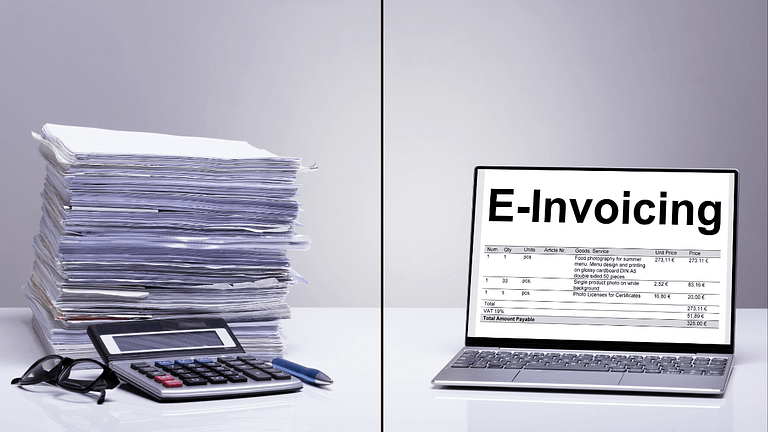Did you know that over 80% of data breaches involve payment card data, and the average cost of a data breach reached $4.45 million in 2023? For businesses that handle payment card information, these numbers are a wake-up call.
The purpose of PCI compliance tests is to make sure your payment systems are protected from potential risks in accordance with the Payment Card Industry Data Security Standards (PCI DSS).
But what exactly is a PCI compliance test, and do you really need it?
What is a PCI Compliance Test?
A PCI compliance test is a procedure that businesses undergo to ensure they are following the standards set by the Payment Card Industry Data Security Standard (PCI DSS). This set of regulations is designed to protect cardholders’ information and secure payment data from potential breaches or misuse.
The PCI DSS was established by major credit card brands to help businesses handle card data securely and minimize the risk of data theft or fraud. To remain compliant, businesses need to perform regular testing and assessments, which validate their security measures and show that they are actively protecting sensitive information.
During a PCI compliance test, various aspects of a business’s payment processing environment are assessed. This includes reviewing the storage, transmission, and processing of card data to ensure it adheres to PCI standards.
Tests may involve vulnerability scans, penetration testing, and audits of security policies to detect any weaknesses or non-compliant areas. The goal is to identify and resolve vulnerabilities that could potentially lead to data breaches.
Passing a PCI compliance test demonstrates that the organization is committed to maintaining robust security practices and protecting its customers’ payment information.
Compliance tests are often conducted annually, depending on the volume of transactions processed by the business. Organizations that process a higher volume of card transactions may need to undergo more frequent and thorough testing.
Additionally, failure to meet PCI DSS requirements can result in fines, higher processing fees, or even loss of the ability to process credit card payments. Therefore, regular PCI compliance testing not only helps companies avoid penalties but also enhances customer trust by showcasing a proactive approach to data security.
The 3 Types of PCI Testing
There are three main types of PCI testing. These tests can also be customized to suit the unique requirements of your organization.
1. Vulnerability Scanning
Vulnerability scanning is an automated process that uses specialized software to examine your company’s networks and systems for known security flaws. This type of testing is particularly effective for uncovering issues such as outdated software, misconfigured settings, or other gaps in your security defenses.
It provides a baseline understanding of your organization’s current security posture and helps to identify areas that need improvement.
2. Penetration Testing
Penetration testing simulates real-world cyberattacks on your company’s systems to uncover potential security threats. Carried out by ethical hackers, this testing method involves attempting to exploit vulnerabilities to gain unauthorized access to sensitive data.
Penetration testing goes beyond what vulnerability scans can detect by evaluating the effectiveness of your security measures and uncovering more complex or hidden weaknesses that automated scans might miss.
3. Application Security Testing
Application security testing focuses on evaluating the security of mobile and web applications that handle payment card data. This testing can involve dynamic analysis, static code reviews, and manual assessment of the application’s security features.
Since mobile apps and web applications often serve as the primary points of entry for attackers, this type of testing plays a crucial role in identifying and mitigating vulnerabilities that could be exploited to gain unauthorized access to payment systems.
What Are the Requirements of a PCI Compliance Test?
The requirements for PCI compliance form the foundation of the Payment Card Industry Data Security Standard (PCI DSS), which companies must adhere to in order to protect payment card data.
Businesses can significantly decrease the risk of data breaches and other security concerns while protecting the private payment information of their clients by adhering to these guidelines.
Establish and Maintain a Secure Network
Businesses need to make sure that their networks are secure by implementing firewalls, limiting access to sensitive data, and replacing default passwords with unique and strong credentials.
These measures help to create a secure environment that protects against unauthorized access.
Protect Cardholder Data
To protect cardholder data, companies must encrypt sensitive information, enforce access controls, and continuously monitor and test systems that store or transmit this data.
These practices help ensure that cardholder information remains secure and inaccessible to unauthorized individuals.
Maintain a Vulnerability Management Program
An effective vulnerability management program requires businesses to conduct regular internal and external vulnerability scans, as well as penetration testing, to identify potential security risks.
This proactive approach helps to keep systems up-to-date and resilient against cyber threats.
Implement Strong Access Control Measures
Strong access control measures are essential for restricting access to sensitive data and systems. This includes implementing two-factor authentication, limiting user access based on job roles, and regularly reviewing access logs to detect any unusual activity.
Regularly Monitor and Test Networks
Businesses must continuously monitor their networks to detect any potential security threats and test their security policies for effectiveness. Regular monitoring ensures that any vulnerabilities are quickly identified and addressed to prevent unauthorized access.
Establish an Information Security Policy
A comprehensive information security policy should include procedures for protecting sensitive data, responding to security incidents, and providing employees with ongoing security awareness training. This policy serves as a guiding framework for maintaining a secure business environment.
How to Conduct a PCI Compliance Test?
Testing for PCI compliance involves many steps to meet and validate adherence to the Payment Card Industry Data Security Standard (PCI DSS).
Let’s take a look at the process, types of testing, and associated costs step-by-step.
Step 1: Determine Your Compliance Level
PCI compliance is divided into four levels based on the number of card transactions a business processes in a year.
The levels are set by major credit card brands like American Express, Visa, Mastercard, Discover, JCB, and UnionPay, with similar requirements across brands. The levels are:
- Level 1: Over 6 million transactions per year
- Level 2: 1 to 6 million transactions per year
- Level 3: 20,000 to 1 million transactions per year
- Level 4: Fewer than 20,000 transactions per year
Step 2: Perform a Self-Assessment
The PCI Security Standards Council provides a self-assessment tool to evaluate your compliance with the 12 requirements of PCI DSS. This assessment includes questions tailored to your business type, such as eCommerce or service providers, based on how you accept card payments.
The self-assessment has two parts: a questionnaire that addresses the 12 PCI DSS requirements, which can be used internally or as the first step toward full compliance, and an “Attestation of Compliance,” which certifies the completion of the assessment.
For extra assurance, a Qualified Security Assessor (QSA) can validate the self-assessment.
Step 3: Review Requirements for Each Card Brand
While the PCI DSS requirements are consistent across brands, slight variations exist in validation steps. Refer to brand-specific guides for companies like Visa, Mastercard, American Express, Discover, JCB, and UnionPay.
Most businesses follow the PCI DSS Quick Reference Guide to prepare for penetration testing.
Step 4: Conduct Vulnerability Scanning and Penetration Testing
Requirement 11 of PCI DSS mandates regular testing of security systems. This includes vulnerability scanning and penetration testing:
- Vulnerability Scanning: Uses automated tools to identify security weaknesses in systems, producing a report of potential risks. Regular scans help detect gaps in your defenses.
- Penetration Testing: Involves manual testing methods to exploit discovered vulnerabilities. It assesses the security of both external (public-facing) and internal (within the local network) systems, as outlined in PCI DSS Requirement 11.3.
These tests ensure your security controls are effective and compliant.
Step 5: Engage a Qualified Security Assessor (QSA)
A QSA is a certified firm authorized by the PCI Council to perform PCI DSS assessments. The QSA will:
- Verify the accuracy of the information provided
- Confirm compliance with PCI DSS
- Provide support throughout the process
- Conduct on-site evaluations, if required
- Follow the assessment procedures specified by PCI DSS
- Validate the assessment scope and review compensating controls
- Produce a final Report on Compliance
Step 6: Submit Compliance Reports
After completing assessments, businesses must submit a Self-Assessment Questionnaire or a Report on Compliance, depending on the compliance level.
While annual reporting is standard, some requirements may call for quarterly submissions. Following the instructions for each report ensures successful submission.
Achieving PCI compliance can be time-intensive, but non-compliance risks significant penalties ranging from $5,000 to $100,000 monthly, and businesses may lose their ability to process credit card payments.
Ensure PCI Compliance with Premier Payments Online
It doesn’t have to be difficult to navigate PCI compliance.
Premier Payments Online offers customer-focused payment solutions that are customized to meet the particular requirements of your company. Our team will assist you in meeting all PCI criteria in a simple and affordable approach, regardless of your enterprise size.
We have been in the business for more than 15 years, so we know how important it is to make payment processing simple and safe. Among the many services we provide both locally and abroad are payment consulting, risk and fraud management, and custom processing solutions.
Get in touch with us to learn how we can help your business stay secure and compliant.











